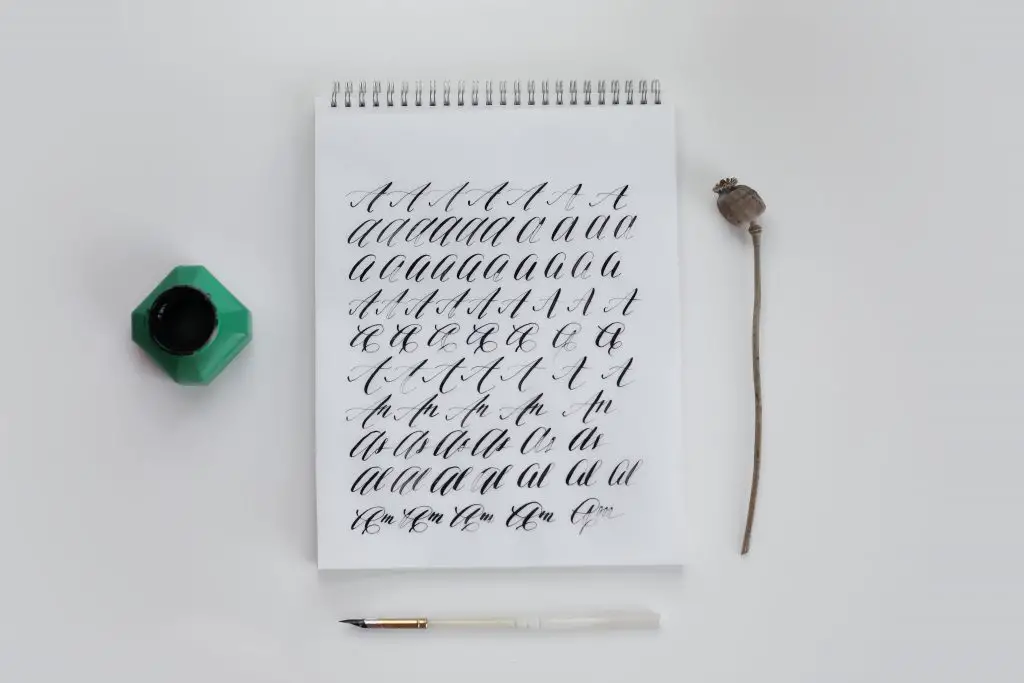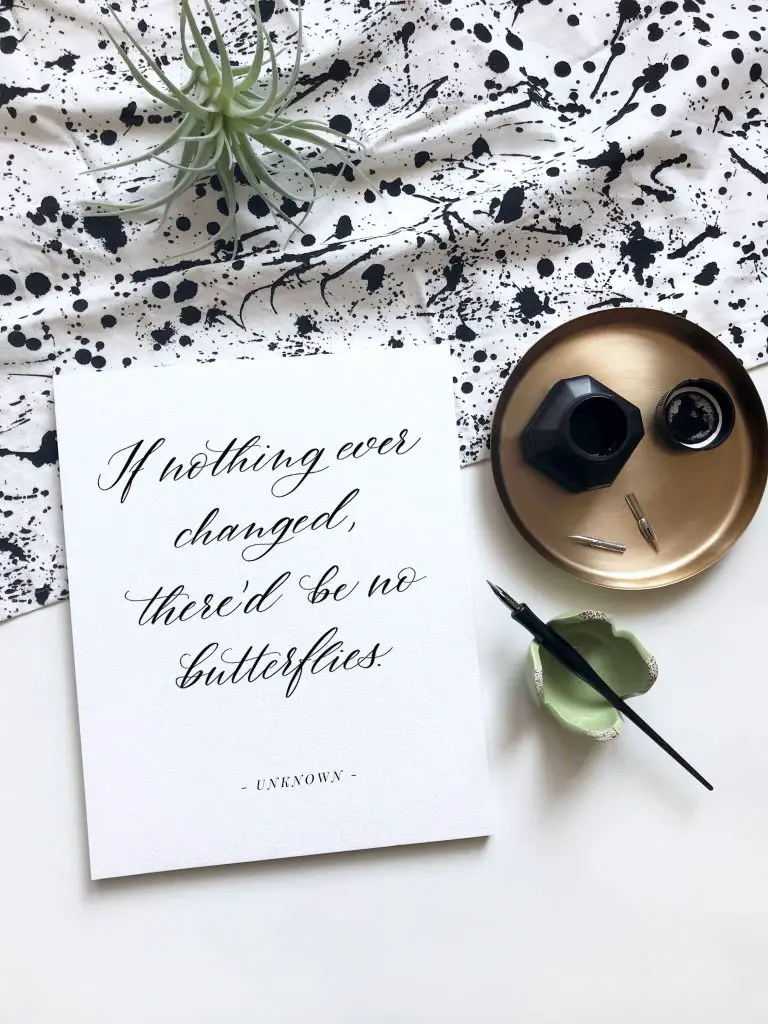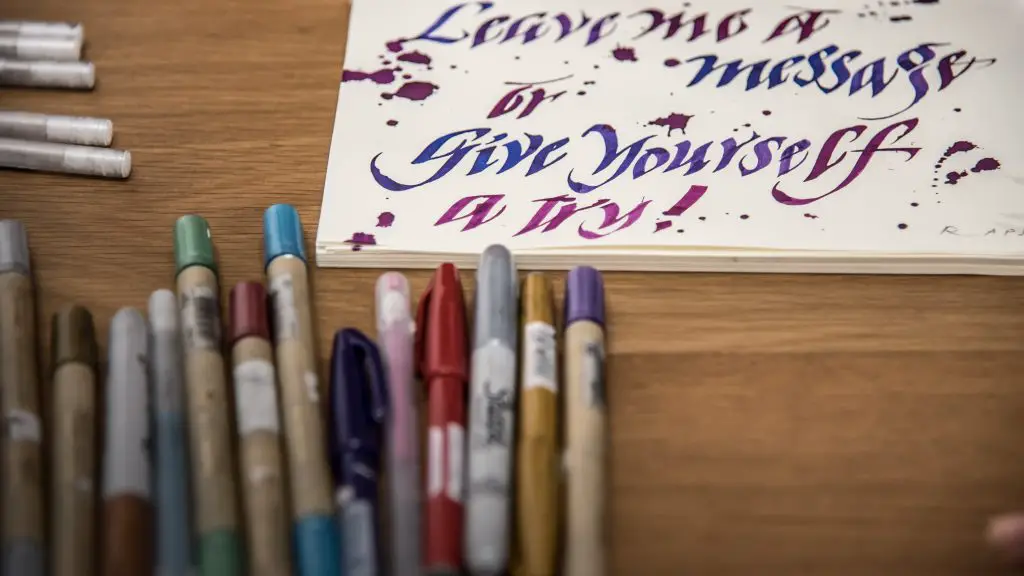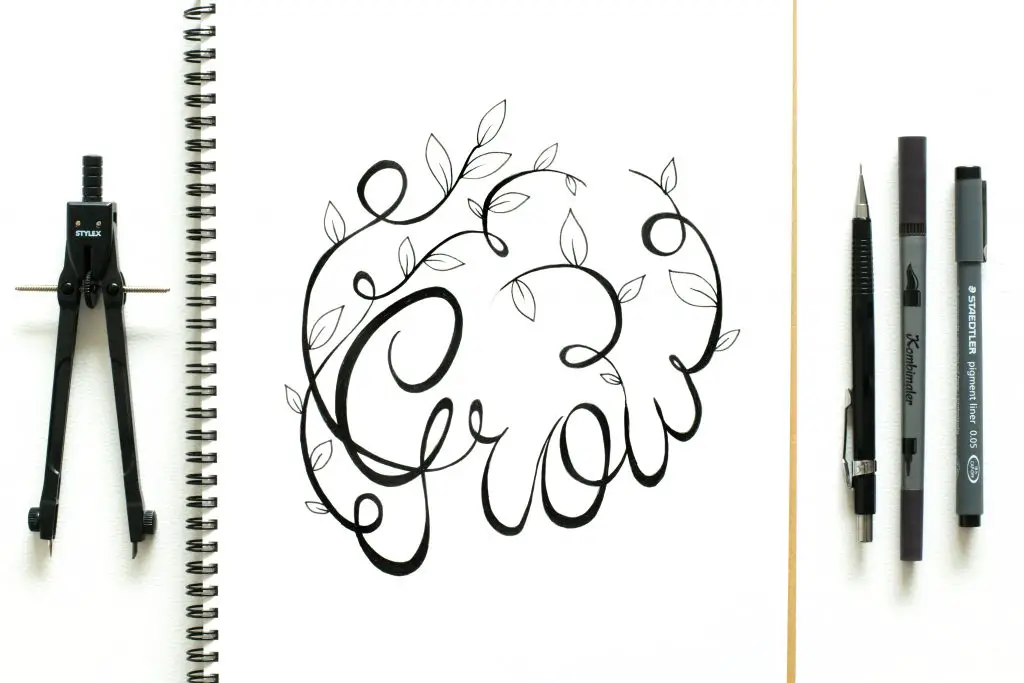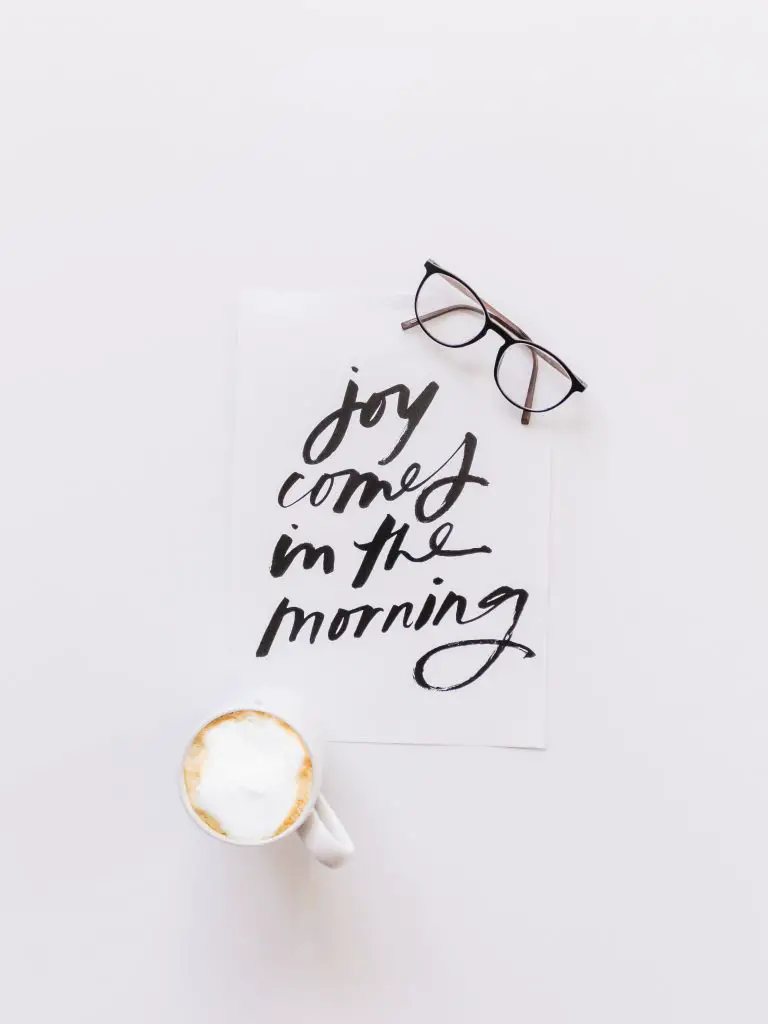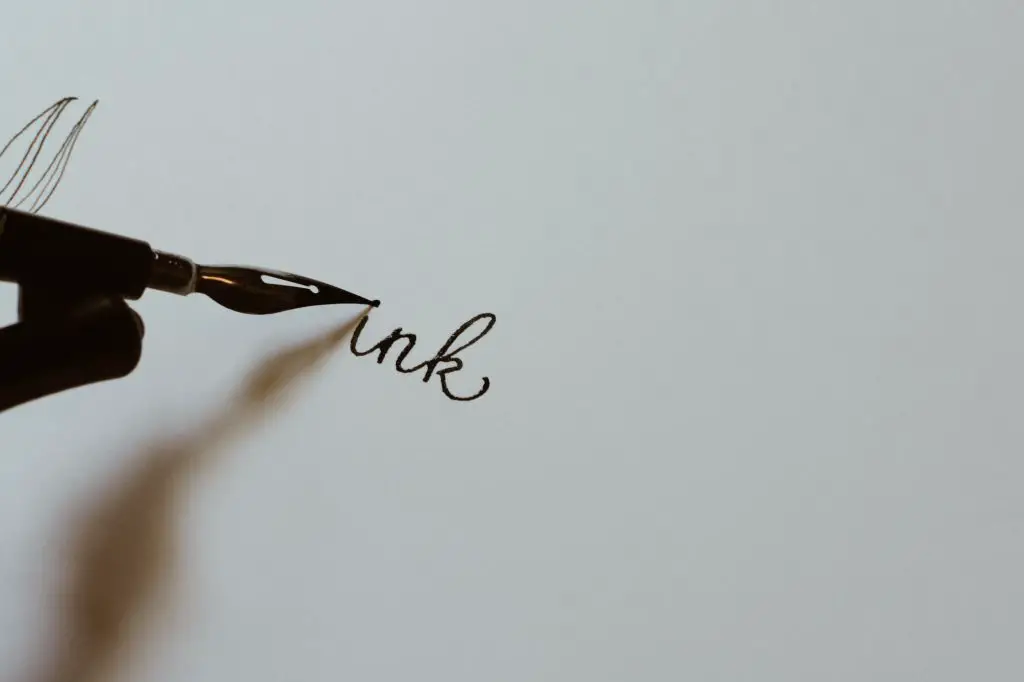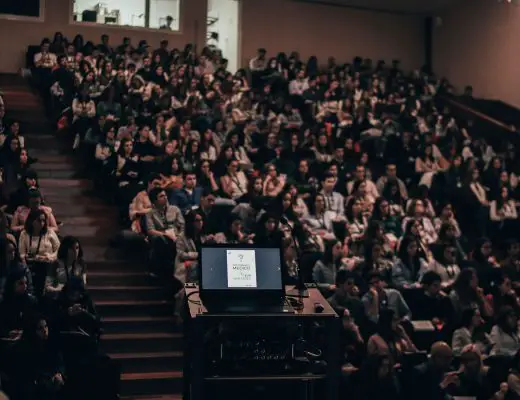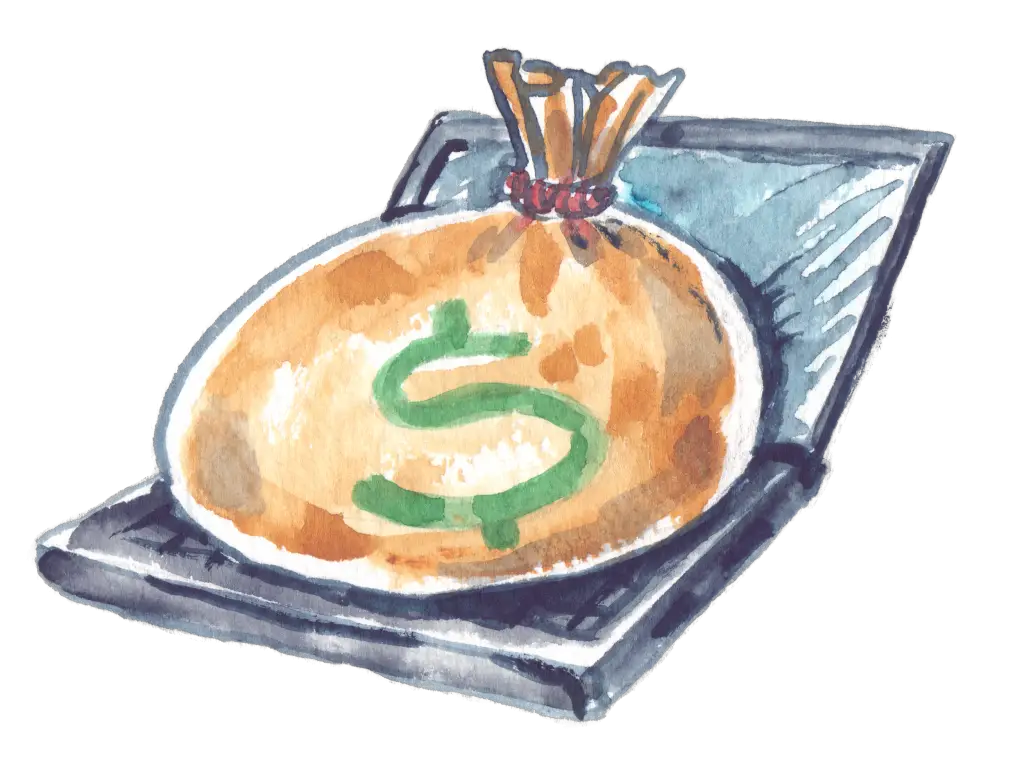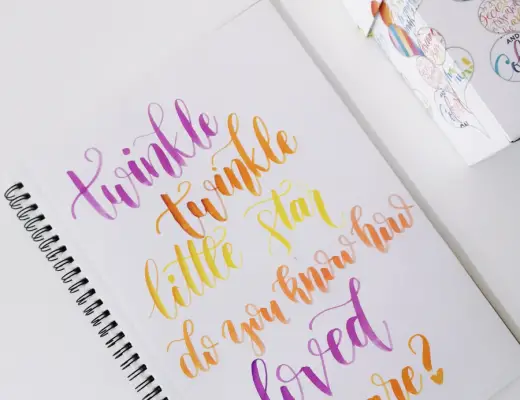
CommonCentsMom.com is advertiser-supported: we may earn compensation from the products and offers mentioned in this article. However, any expressed opinions are our own and aren't influenced by compensation. The contents of the CommonCentsMom.com website, such as text, graphics, images, and other material contained on this site (“Content”) are for informational purposes only. The Content is not intended to be a substitute for professional financial or legal advice. Always seek the advice of your Financial Advisor, CPA and Lawyer with any questions you may have regarding your situation. Never disregard professional advice or delay in seeking it because of something you have read on this website!
Brush lettering is the perfect alternative to finding your favorite font and typing up what you want to say. It’s basically calligraphy, but without all of the curls and frills. Brush lettering is still plenty fancy and impressive if you can master it, but it’s one of those letter art forms that are more approachable, even for beginners. That’s why it’s totally possible to learn brush lettering in a month.
To be fair, you will still be something of a beginner for a while after you start to learn brush lettering. It can be a complicated way of writing for a lot of people.but if you can master it just a little, you can create your own greeting cards, write in a decorative script, and impress literally everyone you know. You won’t become an expert after a few weeks of practice, but you can learn brush lettering in a month to get the basics down.
What Brush Lettering Is
Brush lettering is like calligraphy’s step-sibling that is a bit less complicated. That’s not to say it’s easy, because it isn’t as simple as writing in cursive and adding a few swirly lines at the top or bottom of each letter. But if you get it right, you can write in brush lettering to make visually appealing greeting cards, letters, or even artwork you can hang on the wall.
Chances are, you have seen brush lettering on different projects online or on Pinterest and felt serious FOMO at not being able to do brush lettering yourself. It is essentially decorative handwriting that isn’t quite as complicated as calligraphy, but is as visually appealing.
Before You Start
As to be expected, you can’t really pick up a random pen or pencil and start learning how to do brush lettering. You will need special writing utensils to get the most out of each stroke and to make the brush lettering as clear and fluid as possible. You should invest in some high quality, or at least decent quality, brush pens. These hold ink better and more evenly and won’t leave your paper or canvas a blotchy mess while you write or afterwards. If you have found some pends you are in love with that are technically meant for calligraphy, however, they will likely work for brush lettering too. And in order to be able to practice frequently, you will want to designate a specific notebook or plain notepad to your brush lettering script.
The First Steps
Once you have the right tools to start brush lettering, you can start with a few easy but essential strokes. You won’t be perfect at brush lettering by the end of your first month of learning, but these are the proper steps to get you started.
1. Hold Your Pen Correctly
Overall, you should keep your grip of the pen relatively loose and hold it much like you would hold a standard pen or pencil. As a rule, however, try to hold it at a 45 degree angle over your paper. This ensures that all parts of the letters are written with the same amount of pressure and without any darker spots because of the way your pen hit the paper or lingered.
2. Use Print Out Stencils
Once you learn how to properly hold the pen for brush lettering, print out stencils so you can practice on them. They are essentially worksheets with lightly colored brush letters so you can move over them with your own pen and learn how the letters are supposed to look.
3. Try The More Simple Brush Lettering Strokes
After you feel comfortable with the brush lettering stencils, you can start to go freehand. You might realize you need to go back to the stencils for more practice. However, mastering the handful of common brush lettering strokes is key to learning how to write in brush lettering on your own.
4. Copy What You See From Specific Fonts
You can also go online and find specific fonts that are based on brush lettering. Try to copy these freehand, if only to see where your skill level is at. You can start with less complicated versions and work your way up from there.
5. Repeat
Repeat all of these steps as many times as you need until you feel comfortable with brush lettering. It might take longer for you or it may be a little easier for you than it is for other people. But if you keep at it, you can slowly improve.
Learning brush lettering isn’t as easy as just copying words already written in the lettering style. That might be how you start, but eventually, you will need to transition to riding solo. It requires a lot of time and the right writing utensils to properly learn how to do brush lettering. If you have the right tools and the patience to follow the style as you embark on the learning process, you can start to tackle brush lettering.

